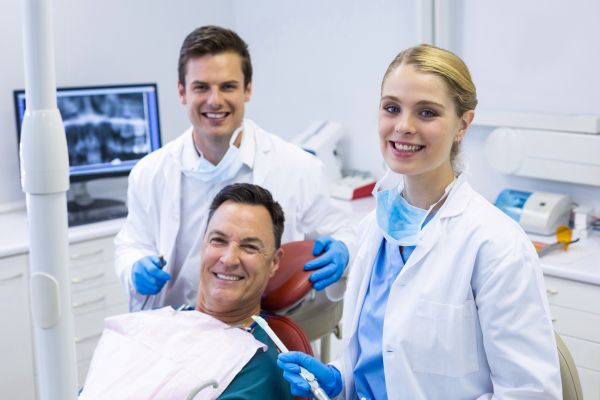 Certain kinds of dental work or surgery can be expensive depending on the procedure, but general dentists can often perform necessary work without the added expense of going to a new office. Unfortunately, many people do not understand the value general practitioners offer because the job title sounds unspecific. Therefore, to avoid unnecessary visits to different dental offices, it is crucial to define a general dentist's role and explain the five most common procedures these dentists perform.
Certain kinds of dental work or surgery can be expensive depending on the procedure, but general dentists can often perform necessary work without the added expense of going to a new office. Unfortunately, many people do not understand the value general practitioners offer because the job title sounds unspecific. Therefore, to avoid unnecessary visits to different dental offices, it is crucial to define a general dentist's role and explain the five most common procedures these dentists perform.
What Is a General Dentist?
Placing the word "general" in front of the occupation of dentistry does not diminish these doctor's skills and qualifications. The term merely indicates that these dentists are primary care dentists, also known as family dentists. These doctors are responsible for all oral healthcare needs. From fillings and crowns, root canals and gum care to bridges and veneers, these dental professionals are capable of many important procedures.
The 5 Procedures Most General Dentists Perform
A general dentist is qualified to perform on a variety of patients in varying situations. However, these dentists, being primary dental care providers, are most known for five types of procedures.
1. Tooth alignment
Uneven or crooked teeth are a common ailment, which means that dentists with general dentistry practices are capable of performing certain forms of corrective procedures. For example, these dentists can place braces, veneers or crowns to help correct such issues for the patient.
2. Tooth decay
Tooth decay in people of all ages is a problem, and family dentists are familiar with the epidemic as well as several methods for treating the deterioration and damage. While treatment varies depending on the severity and nature of the injury, these dentists can perform root canals procedures, removing infected tissue from the root chamber and replacing it with an antibacterial filling.
3. Replacement and restoration
In addition to realignment and root canals, a primary care dentist can replace severely damaged teeth in an attempt to restore the patient’s smile. This type of procedure can be completed in a few different ways:
4. Gum disease
Primary care dentists are also the principal dentists for treating periodontal or gum disease. The treatments for this type of disorder can be as simple as medicated mouthwashes, cleanings and tooth scaling. However, if the condition worsens, then the treatments can escalate to laser procedures or even surgery.
5. Diagnostic testing
Family or primary care dentists specialize in diagnostic procedures, meaning that these dentists are the investigators that help determine when it is time to bring in a different practitioner. One of the most essential pieces of equipment used by general dental practitioners is the x-ray machine. These devices allow dentists to examine roots, identify cavities, track dental development and detect and diagnose oral health issues.
Conclusion
General dentists may not have a specialization in orthodontics or pediatrics. However, with knowledge of tooth decay, diagnostics and other key dental practices, these primary dental care professionals are equipped to serve as family dentists.
Request an appointment or call Integrated Dental Care at (610) 600-9745 for an appointment in our Exton office.

